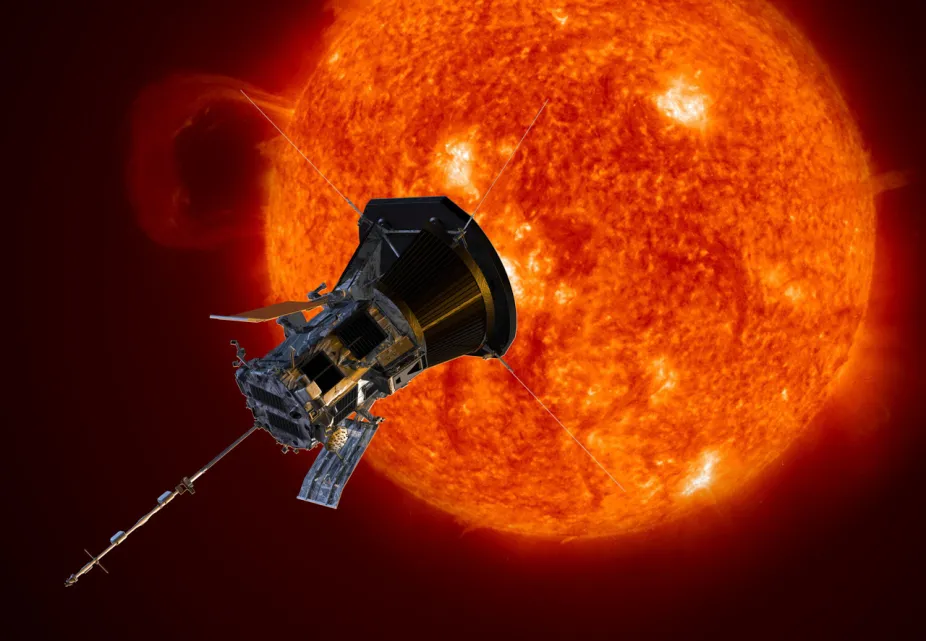How Do We Study the Sun?

Solar eclipses provided the earliest opportunities to observe features of the Sun that we cannot usually see, like the corona. However, looking at the Sun with the naked eye can be dangerous, even during a solar eclipse.
kdshutterman/Getty Images
The Sun is challenging to study. Looking directly at it can damage our eyes, except during the brief moment during a total solar eclipse when the moon completely blocks out the disk of the Sun. It is over 93 million miles away, which is currently too far for humans to travel. And it is too hot to approach, even if we could travel that far.
Fortunately, we can use technology to study the Sun safely from our home planet. We can wear solar viewing glasses and look through solar telescopes that protect our eyes and allow us to see features like the Sun’s corona. Satellites observe the Sun from above Earth’s atmosphere and capture images that are invisible to the human eye. And spacecraft have flown near, and even past, the Sun.
Studying the Sun from Earth
Before satellites and spacecraft, our only way to observe the Sun was from the surface of Earth. Our ancestors would have studied the changing height of the Sun in the sky throughout the year, which would inform the planting of crops and mark the passage of time. There are early records of humans observing the corona and even solar prominences during solar eclipses. But more detailed observations became possible only after the invention of the telescope. The first sunspots were likely observed through a telescope in the 1600s, though there are differing accounts of who actually accomplished this feat and when. When viewing the Sun through a telescope or binoculars we must use a special filter to protect our eyes.

The coronagraph at the Mauna Loa Observatory, Hawaii.
UCAR
Today, highly powered ground-based telescopes and coronagraphs (which are telescopes that can block out sunlight to reveal the corona) help scientists monitor the Sun continuously. These telescopes observe different frequencies of electromagnetic radiation from the Sun, including visible light, infrared, and radio waves. Ground-based telescopes can be built much larger than those sent to space and are easier to access for repair and enhancement. To counteract some distortions that occur when viewing the Sun through the Earth’s atmosphere, most of these telescopes are located at high elevations.
The Mauna Loa Solar Observatory on the Big Island of Hawaii is home to the telescope pictured at the right. This research station, located on the flank of the Mauna Loa volcano, is run by NCAR’s High Altitude Observatory (HAO) and provides continuous images of the Sun for research and to the public. Visit The Sun Today to view live images from the Mauna Loa Solar Observatory.
Studying the Sun from Space
Today, the Sun is studied using a fleet of satellites orbiting Earth. Outside the Earth’s atmosphere they can gather clearer, less distorted images. NASA spacecraft have also advanced our understanding of the Sun. Voyager I, whose mission wasn’t specifically to study the Sun, was the first spacecraft to travel beyond the heliosphere, which includes the entire area that is influenced by the Sun. And the Parker Solar Probe traveled more than seven times closer to the Sun than any spacecraft before it - in March of 2023, it flew through the Sun’s atmosphere, about 3.8 million miles from the Sun’s surface. The Artemis mission will study what happens when the Sun’s radiation hits the surface of the Moon, which doesn’t have a protective magnetic field like the Earth. Studying the Sun from space allows us to more easily detect disruptions that signal the onset of solar storms, like solar flares and coronal mass ejections, that can create harmful space weather conditions that influence Earth.

NASA's Parker Solar Probe is pushing our understanding of the Sun forward by leaps and bounds. It has flown closer to the Sun than any previous spacecraft.
NASA/Johns Hopkins APL/Steve Gribben
Using Computer Models to Study the Sun
Researchers use images of the Sun collected from satellites, spacecraft, and even ground-based instruments to aid in constructing computer models that run simulated experiments. These experiments help answer questions about the structure of the Sun and the behavior of solar phenomena (like solar prominences and coronal loops), help predict space weather and solar activity, and more. Modeling provides ways to study the Sun that would not be possible otherwise - providing windows into solar behavior over time and helping us to visualize things that are impossible to see firsthand. Sun and Space Weather scientists from organizations such as NASA, NOAA, and NCAR use data and observations from fleets of satellites and spacecraft to create these advanced computer models.
Read more about recent Sun and space weather research and developments from NCAR.